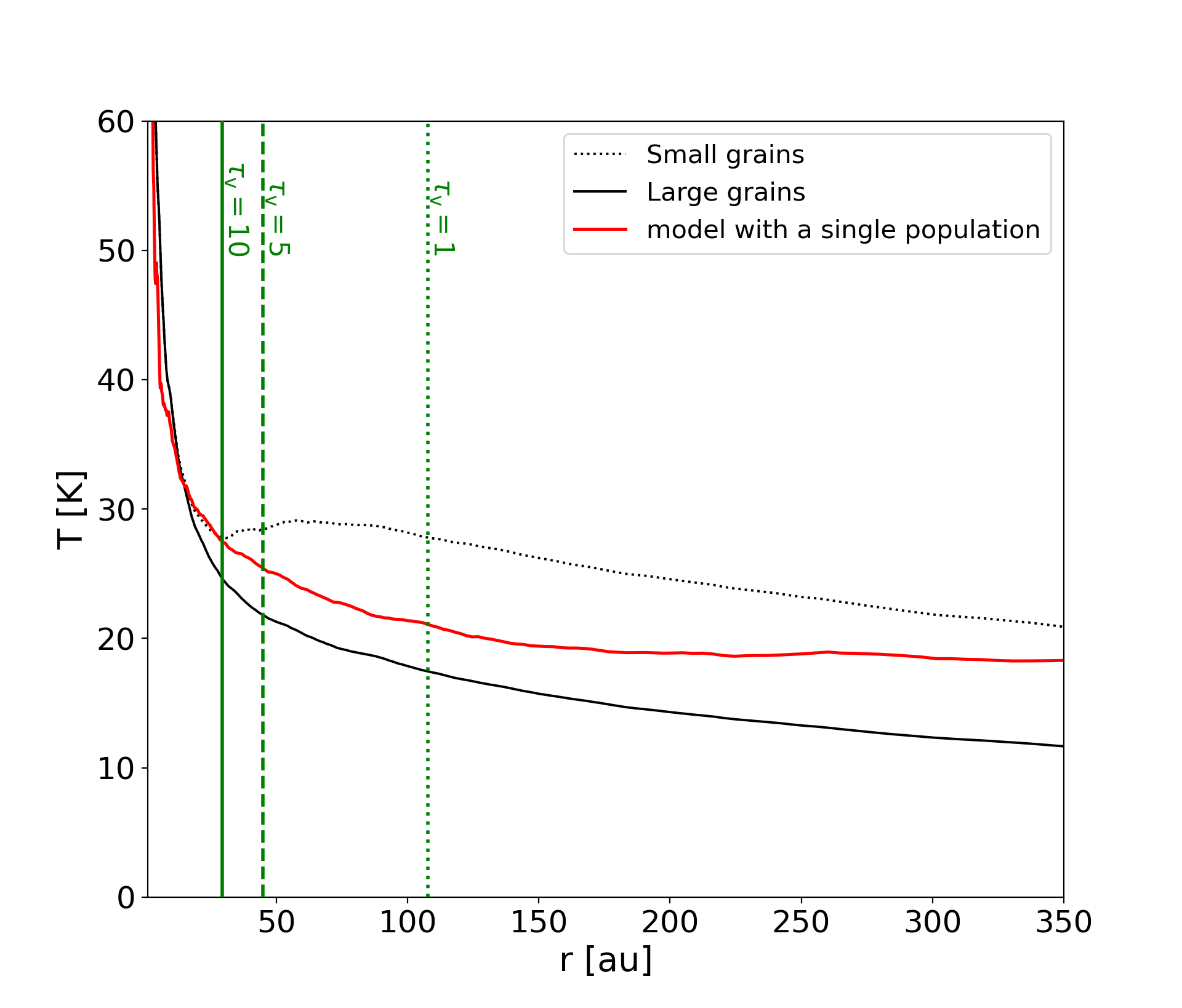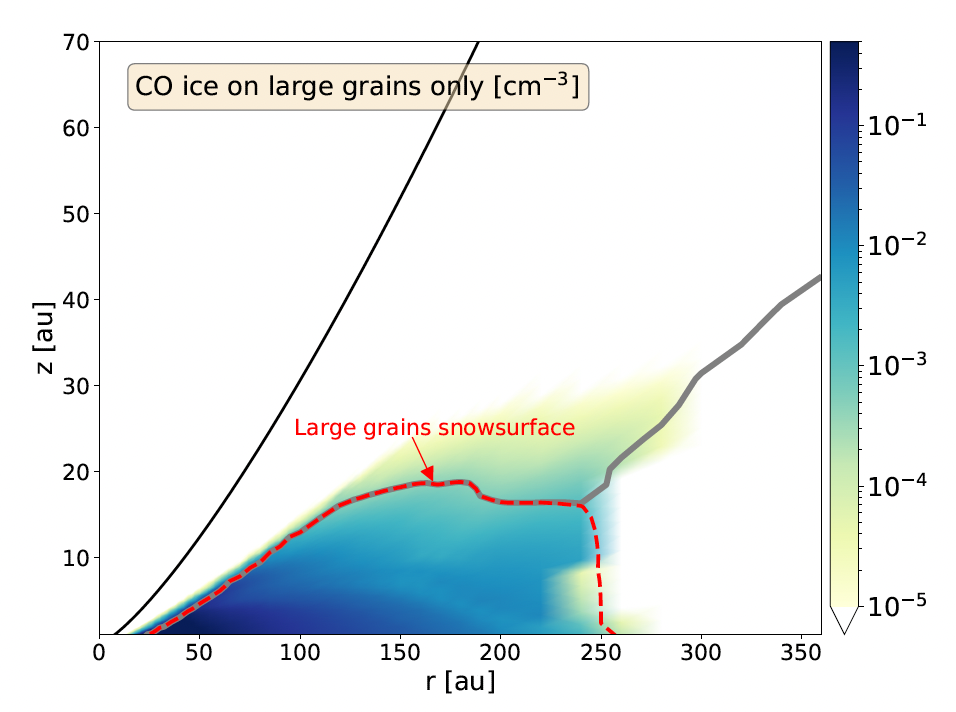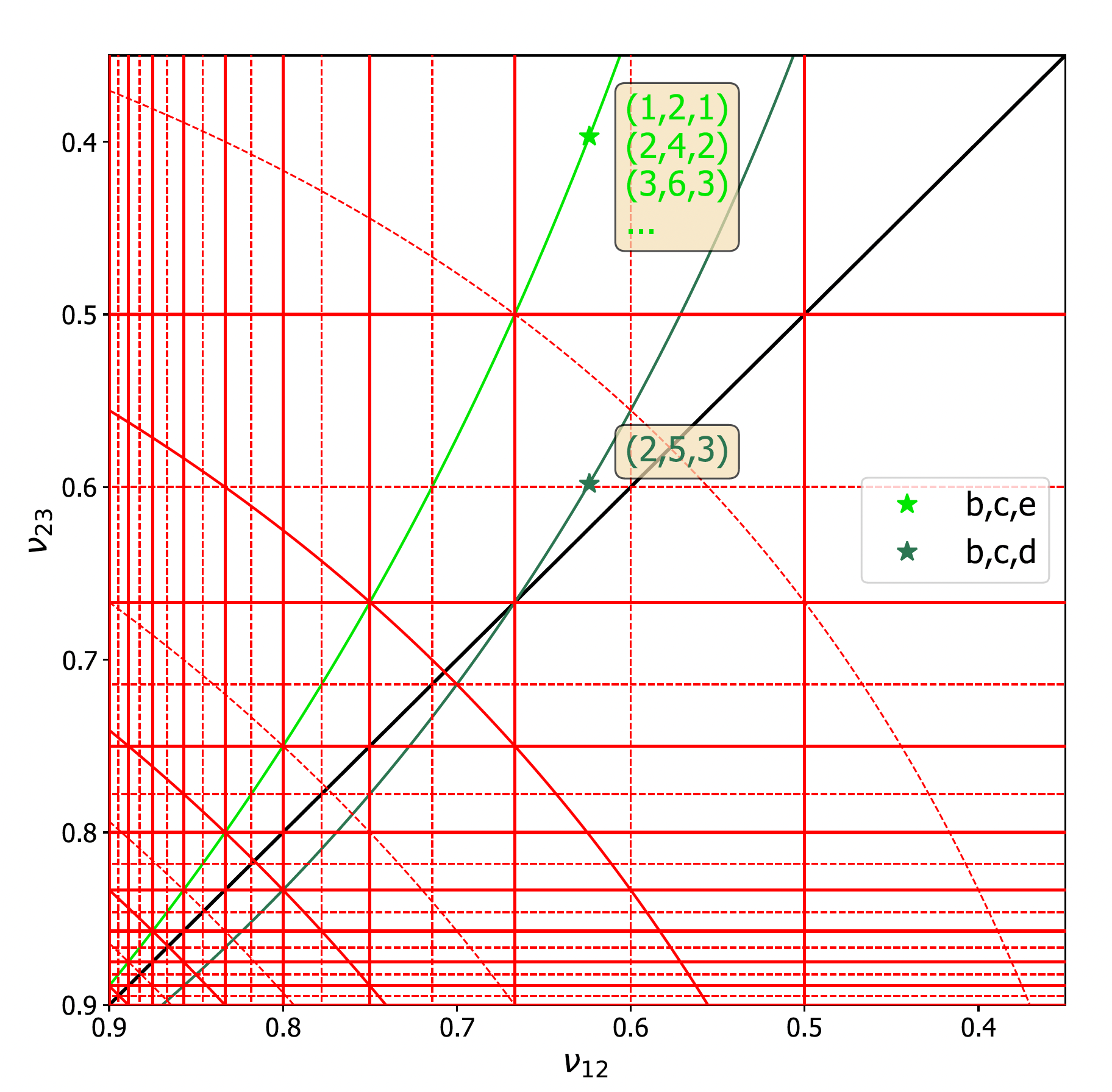My Research

Temperature-dependent size distribution in a protoplanetary disks
The figure shows the dust temperature in the midplane of a disk model composed of two dust populations, a large and a small one (black lines). The two dust populations don't have the same temperature because the absorption/emission opacity is size-dependent: they are not heated with the same efficiency. Therefore, once the disk becomes vertically optically thin enough (green lines), the dust temperatures become thermally decoupled. The red line is the dust temperature in a model with a single population, such a model cannot account for the difference in temperature between various dust species.
View article
CO snowline segregation in a protoplanetary disks
CO ice only on the large dust population. Since the large grains are globally colder, CO can stick on their surface much closer to the star. However, once the small grains become cold enough, CO starts sticking on them (from ~250 au), and the CO ice abundance on the large grains dramatically decreases from 250 au because most of the surfaces is on the small grains. The CO snowline of the large grains thus forms a closed 'bubble' (red dashed line).
View article
Protostellar cloud cores with multiple dust species.
Model comparison of CO gas-phase in the protostellar envelope. The upper left panel shows a thermochemical model using a full grain size-distribution based on a three-dimensional magnetohydrodynamics simulations. The other panels show a similar simulations but using a more simple dust model.
in prep
Stability of three-planet systems
The Kepler telescope has found hundreds of multi-planetary systems in the galaxy. Many of these systems are closely-packed. It appears that some of these systems can survive for very long timescales. I perform direct numerical integrations of very compact three-planet systems to understand what role have the orbital parameters and mean-motion resonance in the system's stability. The image shows the period ratio plane: The period ratio of the adjacent outer pair versus the period ratio of the adjacent inner pair of planets. The red lines are locations of two-body mean-motion resonances. The green lines are locii of selected three-body resonances. We find that if a three-body resonance relation exist between the initial angles, it can allow the compact system to remain stable.
Read more in ads